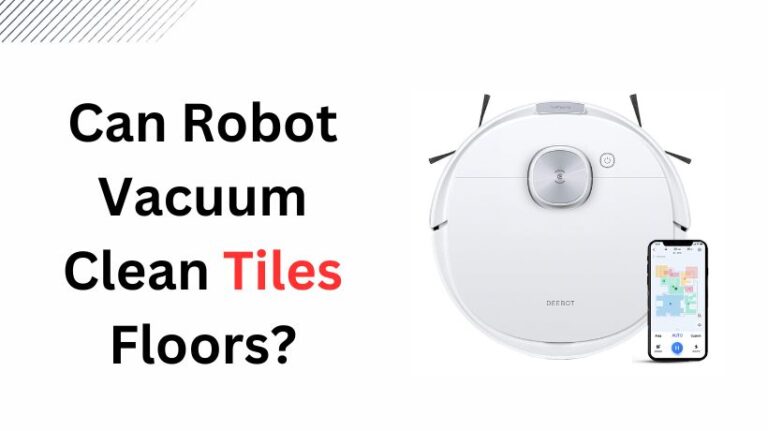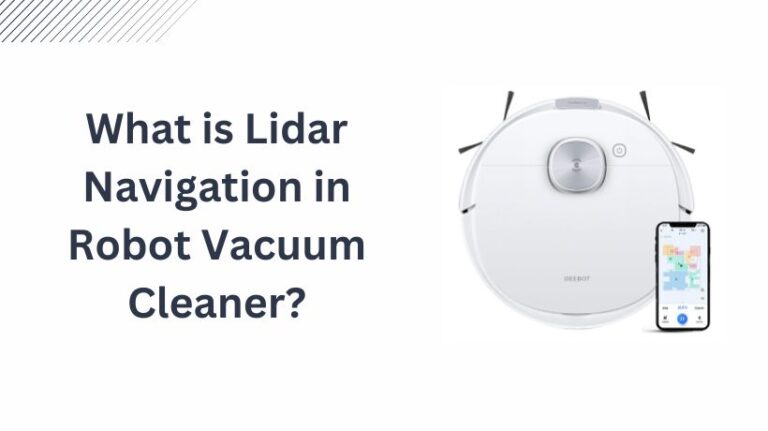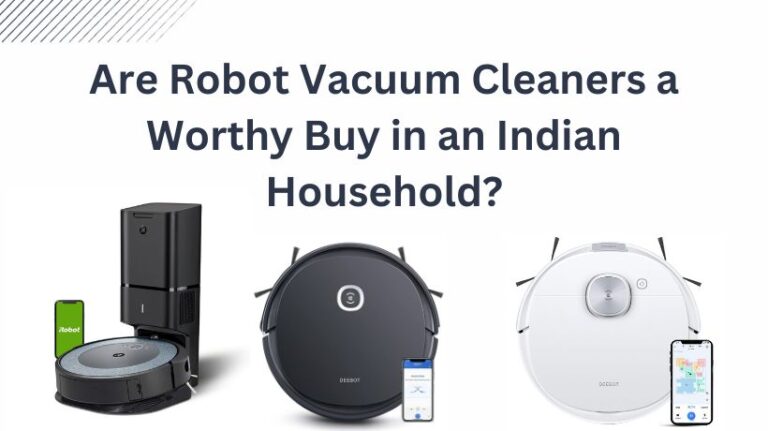Robotic vacuum cleaners offer unparalleled convenience with their ability to navigate tight spaces and adapt to various surfaces. Smart features like scheduled cleaning and remote control through smartphone apps enhance their user-friendliness. However, occasional navigation errors and the higher initial cost compared to traditional vacuums are notable drawbacks.
Finding the right balance between convenience and cost is key for consumers evaluating these innovative cleaning devices.
Table of Contents
ToggleAdvantages of Robotic Vacuum Cleaners:
Convenience and Time-Saving:
Robotic vacuum cleaners offer unparalleled convenience, as they operate autonomously, allowing users to focus on other tasks or leisure activities. With pre-programmable schedules, users can set the device to clean at specific times, ensuring a consistently tidy home without manual intervention.
Efficiency and Thorough Cleaning:
Equipped with advanced sensors and navigation systems, robotic vacuum cleaners can navigate through various surfaces and tight spaces, ensuring a thorough cleaning. Some models even employ mapping technology to create an efficient cleaning route, covering every nook and cranny in the home.
Low Noise Levels:
Compared to traditional vacuum cleaners, many robotic models operate at significantly lower noise levels. This is particularly beneficial for households with babies, pets, or individuals sensitive to loud noises, allowing for a quieter cleaning experience.
Energy Efficiency:
Robotic vacuum cleaners are designed with energy efficiency in mind. They typically consume less power compared to traditional vacuum cleaners, contributing to lower energy bills and a reduced environmental footprint.
Smart Home Integration:
Modern robotic vacuum cleaners often come equipped with smart home features, allowing users to control them remotely through smartphone apps or integrate them with virtual assistants like Amazon Alexa or Google Assistant. This connectivity enhances user experience and adds an extra layer of convenience.
Allergen Filtration:
Many robotic vacuum cleaners are equipped with high-efficiency particulate air (HEPA) filters, effectively trapping allergens such as dust mites and pet dander. This is especially beneficial for individuals with allergies or respiratory issues, as it helps maintain a cleaner and healthier indoor environment.
Adaptability to Various Floor Types:
Robotic vacuum cleaners are designed to adapt to different floor types seamlessly. Whether it’s hardwood, carpet, or tile, these devices can adjust their cleaning methods and suction power accordingly, providing optimal performance across diverse surfaces.
Prevention of Accumulated Dirt and Dust:
Regular use of robotic vacuum cleaners prevents the accumulation of dirt and dust, promoting a cleaner and healthier living environment. This can be particularly advantageous for individuals with busy schedules who may struggle to find time for routine cleaning.
Disadvantages of Robotic Vacuum Cleaners:
Initial Cost:
One of the primary drawbacks of robotic vacuum cleaners is their initial cost. While the prices have decreased over the years, these devices can still be significantly more expensive than traditional vacuum cleaners. This upfront investment may deter budget-conscious consumers.
Limited Suction Power:
Robotic vacuum cleaners, due to their compact size and battery constraints, often have limited suction power compared to their larger, traditional counterparts. This may result in less effective removal of stubborn dirt or deep-seated debris.
Dependency on Battery Life:
The autonomy of robotic vacuum cleaners relies heavily on their battery life. If the battery runs out mid-cleaning, the device may stop and require recharging before completing the task. This can be inconvenient, especially for larger homes that may demand extended cleaning times.
Inability to Handle Large Debris:
While adept at handling small particles and dust, robotic vacuum cleaners may struggle with larger debris or objects on the floor. Items like toys, cables, or clothing can obstruct the device’s path and require manual intervention to resume cleaning.
Maintenance and Repairs:
Robotic vacuum cleaners, like any electronic device, require regular maintenance. This includes cleaning brushes, emptying dustbins, and ensuring the proper functioning of sensors. Additionally, if a malfunction occurs, repairs may be challenging, and users may need to rely on specialized technicians.
Lack of Deep-Cleaning Capabilities:
Despite their efficiency in day-to-day cleaning, robotic vacuum cleaners may not offer the same deep-cleaning capabilities as traditional vacuum cleaners. This is particularly relevant for carpets and upholstery that may require more intensive cleaning methods.
Frequently Asked Questions about Robot Vacuums:
1. What are the advantages of a robot vacuum?
- Convenience: Robot vacuums offer hands-free cleaning, saving time and effort.
- Smart Navigation: Advanced sensors and mapping technology enable efficient navigation around obstacles and various floor types.
- Scheduled Cleaning: Many models allow users to set cleaning schedules, maintaining a consistently clean home.
- Remote Control: The ability to control the robot vacuum through smartphone apps enhances user accessibility.
2. What are the disadvantages of a robot vacuum?
- Navigation Challenges: Robot vacuums may encounter difficulties navigating complex environments, leading to occasional errors or getting stuck.
- Initial Cost: The upfront investment for a robot vacuum is often higher compared to traditional vacuum cleaners.
- Maintenance: Regular upkeep and occasional part replacement may incur additional costs over time.
- Limited Capacity: The dustbin in robot vacuums is smaller than traditional vacuums, requiring more frequent emptying.
3. How useful is a robot vacuum?
- Robot vacuums are highly useful for maintaining daily cleanliness, especially in smaller living spaces. Their automated operation and smart features make them a convenient choice for busy individuals who want to keep their homes tidy with minimal effort.
4. Can I run my robot vacuum every day?
- Yes, most robot vacuums are designed for daily use. Scheduled cleaning features allow users to program the device to run automatically at preferred times, ensuring consistent cleaning without manual intervention. However, the frequency may depend on factors like the size of the space, the amount of foot traffic, and the type of debris
Conclusion:
In conclusion, the adoption of robotic vacuum cleaners comes with a set of distinct advantages and disadvantages. While these devices offer unparalleled convenience, time-saving benefits, and improved efficiency in day-to-day cleaning, they also pose challenges related to cost, maintenance, and limitations in deep-cleaning capabilities.
As technology continues to advance, it is likely that the disadvantages associated with robotic vacuum cleaners will be addressed, making them an even more attractive and viable option for maintaining clean and healthy living spaces. Ultimately, the decision to invest in a robotic vacuum cleaner depends on individual preferences, lifestyle, and the specific needs of the household.




